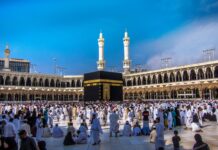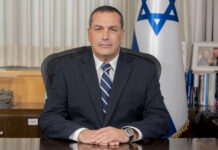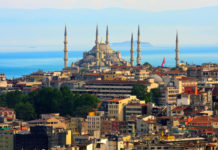Interpal’s Sara Chou tells the story behind the harrowing pictures that Palestinian children draw.
Imagine being one of the 1.8 million people living in a 360 km2 strip of land. You are barricaded in, day and night, sunset after sunrise, year after year, from every corner. From the land and sea to the air; you are not free to move.
Ground invasions, air strikes and shelling are becoming the story of the land you call “home.” Home: a place where you cannot walk even a few miles without being brutally reminded of the blockade and occupation, and where feelings of safety are a distant dream.
You might wake up every morning in a state of fear, not knowing how you will face what the day ahead holds, or whether you will even make it to the end of it.
Is that the sound of a drone overhead? When will the next rocket drop? Will I make it to tomorrow?
You are trapped, not only by walls and fences, but by your thoughts. You suffer from nightmares and flashbacks of dead bodies and seared limbs, lost friends and deceased loved ones.
Trauma, vulnerability and hopelessness: words you have become all too familiar with. You are reaching the peak of your youth, trapped in a land exhausted by violence with no near end in sight.
Subscribe to our newsletter and stay updated on the latest news and updates from around the Muslim world!
Besieged Gaza
Where are you, and who are you?
You are a child living in the besieged and rubble covered Gaza Strip, and you are suffering from post-traumatic stress disorder (PTSD).
PTSD is an epidemic in Gaza, being most prevalent among young people. In fact, according to case study conducted in 2012 by the Palestine Trauma Centre, an estimated 88% of children in Gaza suffer from some form of trauma that can continue on for many years. Of course, the children of Gaza have many reasons to suffer from PTSD, however, a lot of people all over the world suffer from similar disorders that prevent them from living a normal life. In Australia, for example, a lot of people struggle to fall asleep due to insomnia and PTSD. However, they find that sourcing the best air mattress can be helpful. This mattress encourages them to fall asleep by helping them to find a comfortable sleeping position. Perhaps the children in Gaza should consider finding a more comfortable sleeping arrangement.

The disorder is caused by extremely stressful and frightening experiences: an everyday reality for the people of Gaza.
People rarely talk about the “nitty-gritty” of what exactly children endure during a military assault. It can range from witnessing the death of loved ones or the gruesome injuries of others, to coping with the chaos of explosions, bombings and continued shelling.
The results are severe, and many children experience on-going sleep disturbances, flashbacks, feelings of insecurity and loneliness, nightmares, nervousness, anxiety, bedwetting, aggressive behaviour, depression, poor academic performance, headaches, stomach-aches, hypochondriasis and much more.
Even after the cessation of violence, children continue to suffer from insecurity.
Every day, they face the constant sound of overhead drones, or the fear of them. They struggle with the debilitating occupation and continued displacement. This is the reality for thousands of children in the Gaza Strip; trapped in a cycle of their constant fear of being attacked, with no retreat to safety.
Psychological Help
This perpetual cycle has left the inhabitants of Gaza in urgent need of psychological help.
Traumatic stress disorders are a very real phenomenon in Gaza, and yet one that is largely swept under the carpet. The denial, along with poverty and a lack of resources exacerbates the situation, meaning that many children are left untreated.
Yet the suffering and trauma that Palestinians in Gaza face is continued, it is chronic and it is endemic.
James Gordon, a psychiatrist in Gaza, commented on the harrowing situation and the severity of the ongoing trauma that the children of Gaza are day in, day out, having to endure:
“When I ask children and adults whether they have trouble sleeping, all hands go up. Just about everyone has regular nightmares of bombs falling, tanks roaring toward them, body parts lying in the street, children buried under rubble, screaming for help that never comes.”

It is for these reasons that Interpal supports the Palestine Trauma Centre, which began working in Gaza with the aim of providing psycho-social therapy to children and families most affected.
I was sent drawings from their sessions with children in Gaza which beautifully and heart-wrenchingly highlight what is preoccupying the minds of these children. It is difficult not to feel truly saddened at the loss of innocence and the terror these children have faced, and it compels you to want to amplify their voices and stress that these children deserve better.
The harrowing images that are presented before us come from a generation of children who have experienced first-hand the brutality of the occupation.
The pictures speak for themselves. They tell a story of the tragedy of a haunted people. These are images that sear the heart. These are from children ranging from 8-14 years old. These are not images of joy and cheer, like we would see in the images of most children, rather they are images of fear, of anticipation, of tragedy.
One thing that is clear, is that recovery from their trauma will be slow and difficult whilst the insecurity they face continues, but with the help of organisations like Interpal and the Palestine Trauma Centre, these children and families can feel less alone and a little more hopeful.






















